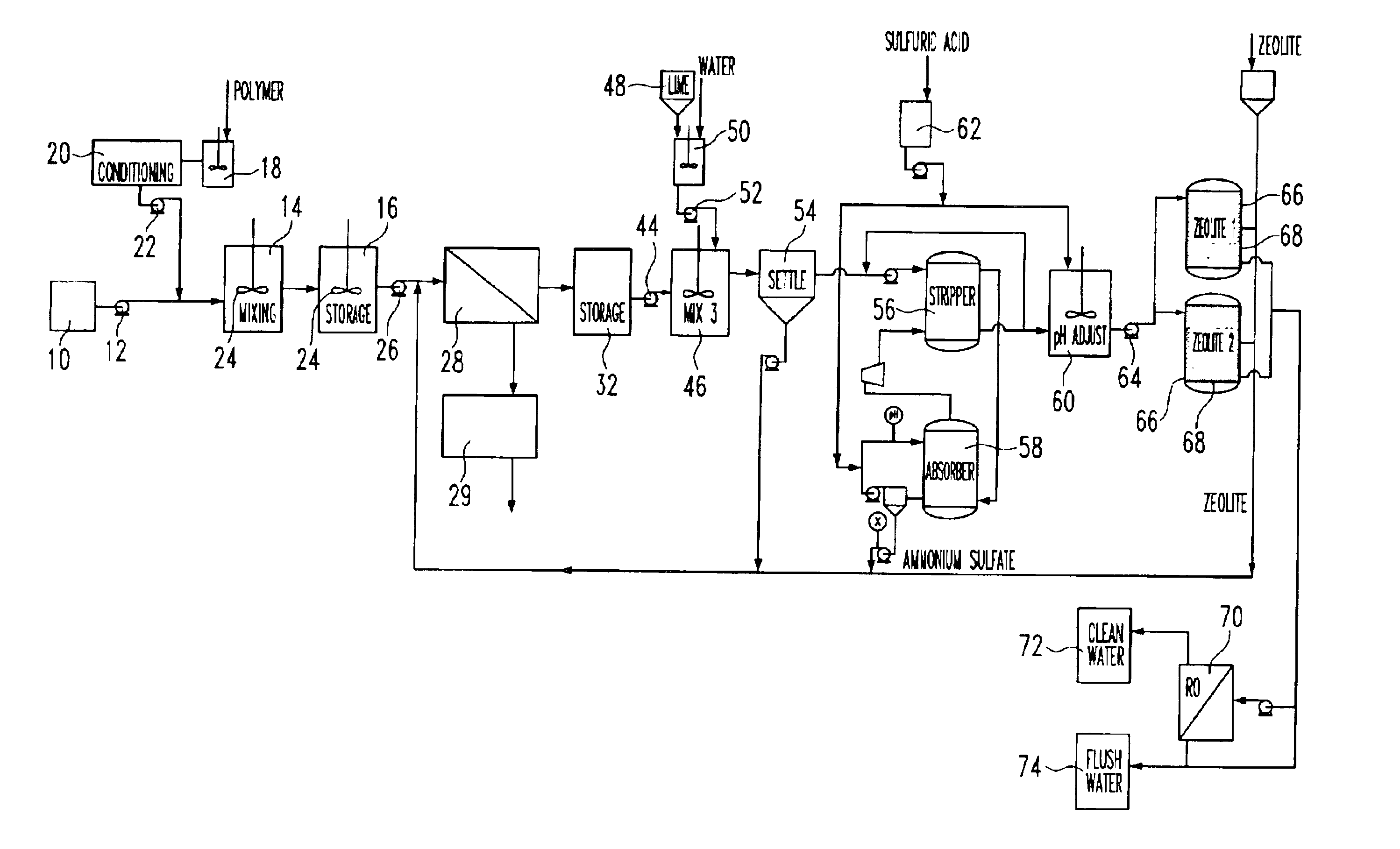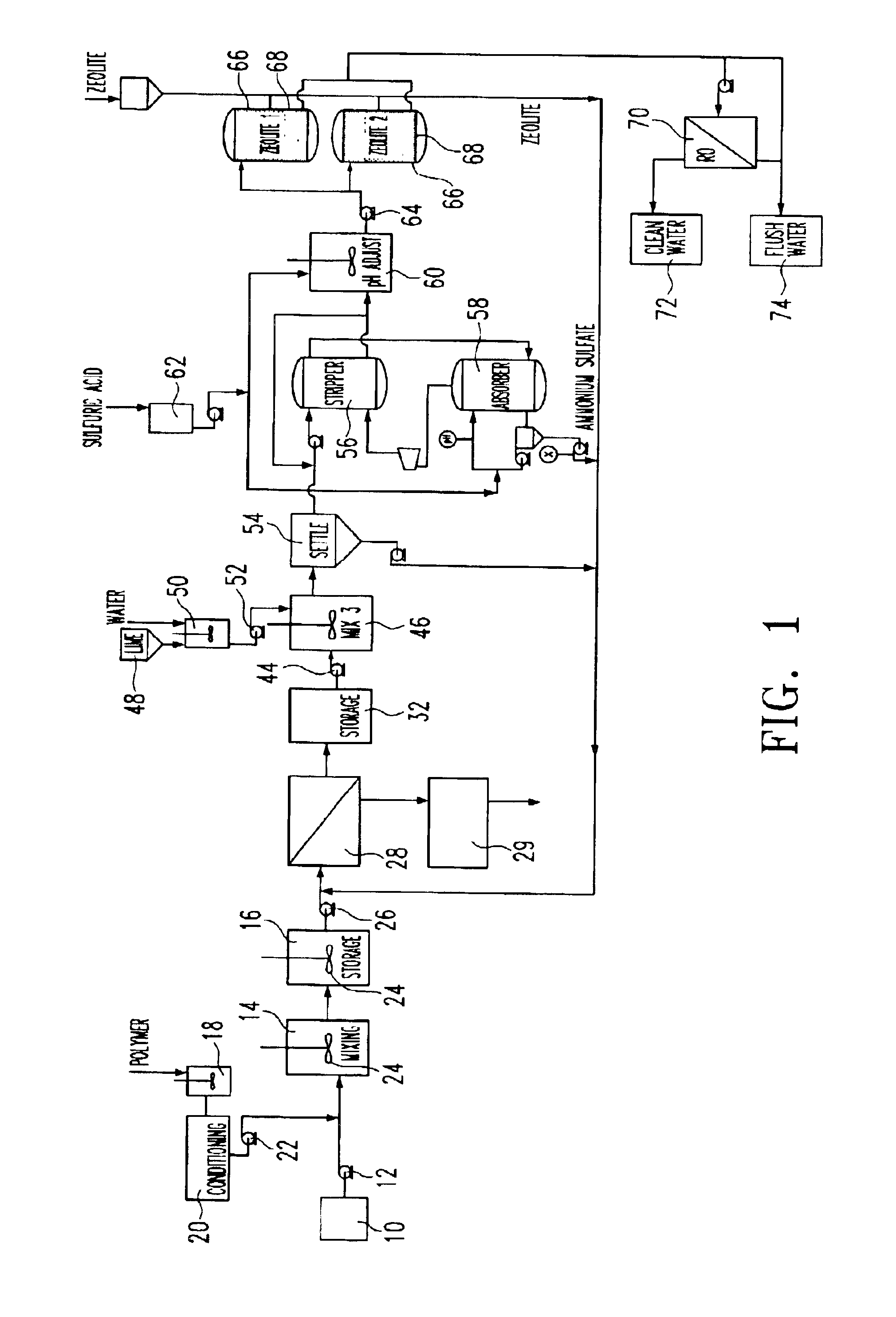Method of waste treatment
a waste material and treatment method technology, applied in the direction of water/sewage treatment by ion exchange, chemical/physical processes, differential sedimentation, etc., can solve the problems of hygienic and inoffensive disposal of this waste matter, the land base is therefore relatively small, and the application for permits to construct large piggeries has been denied. , to achieve the effect of substantially enhancing the extraction of nitrogen, potassium and phosphorus from animal waste material
- Summary
- Abstract
- Description
- Claims
- Application Information
AI Technical Summary
Benefits of technology
Problems solved by technology
Method used
Image
Examples
Embodiment Construction
[0037]In FIG. 1, there is shown a holding tank 10 in which animal waste material, obtained for example from a barn, is collected. A pump 12 feeds the waste material from the holding tank 10 to a mixing tank 14, from which the material passes to a storage tank 16.
[0038]A polymer, for use as a flocculating agent, is introduced into a mixing tank 18, and passes from the mixing tank 18 into a storage tank 20, from which it is fed by means of a pump 22 into the tank 14. The tanks 14 and 16 are provided with agitators 24 for promoting flocculation of the waste material by the polymer, the agitator 24 in the tank 14 being driven at a faster speed than that in the tank 16.
[0039]From the storage tank 16, the waste material is fed by a pump 26 to a liquid / solids material separation unit 28, which is described in greater detail below, and from which solid material extracted from the waste material is fed to a pelletizer 29. Liquid from the separation unit 28 passes to a storage tank 32, from w...
PUM
| Property | Measurement | Unit |
|---|---|---|
| time | aaaaa | aaaaa |
| temperature | aaaaa | aaaaa |
| pH | aaaaa | aaaaa |
Abstract
Description
Claims
Application Information
 Login to View More
Login to View More - R&D
- Intellectual Property
- Life Sciences
- Materials
- Tech Scout
- Unparalleled Data Quality
- Higher Quality Content
- 60% Fewer Hallucinations
Browse by: Latest US Patents, China's latest patents, Technical Efficacy Thesaurus, Application Domain, Technology Topic, Popular Technical Reports.
© 2025 PatSnap. All rights reserved.Legal|Privacy policy|Modern Slavery Act Transparency Statement|Sitemap|About US| Contact US: help@patsnap.com



